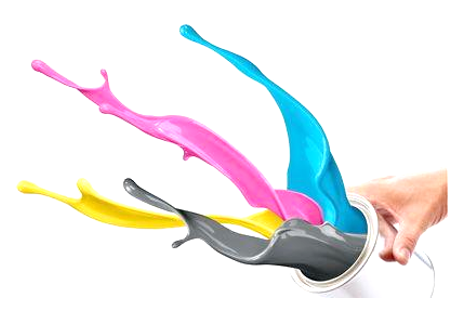Introduction
Antimicrobial coatings are materials that inhibit microorganisms attached to surface or prevent microorganisms from approaching surface. Antimicrobial polymers are the main antimicrobial components of antimicrobial coatings. Among all antimicrobial polymers, polymer containing quaternary ammonium groups is a very effective biocidal class, which shows antimicrobial activity by interacting with the cell wall of the bacteria to rupture the cytoplasmic membrane via contact killing mechanism. The reports show that quaternary ammonium polymeric poly has good antimicrobial properties, which are affected by molecular weight of the polymer, nature of the counter anion, amphiphilic balance (hydrophobicity/ hydrophilicity balance), charge distribution and charge density.

Antimicrobial Mechanism
In general, the quaternary ammonium functionalized polymers perform their antimicrobial activity by interacting with negatively charged bacterial surface followed by change the permeability of the bacterial cell wall, so that enzymes, coenzymes and metabolic intermediates of bacteria overflow, causing the microorganisms to stop breathing and die, so as to achieve bactericidal and bacteriostatic effects. Quaternary ammonium salt fungicides are resistant to high temperature, washable, long-lasting effect, and have a wide range of bacteriostasis, which can effectively inhibit gram-positive bacteria, gram-negative bacteria, yeast and fungi.[1]
Antimicrobial Properties
Ifra et al. investigated the antimicrobial activity of quaternary ammonium functionalized polymers.[1] Here, take the bacillus licheniformis for example and results are represented in Figure 2. In the microdilution method, the antimicrobial activity of cetyldimethylamino functionalized polyvinyl alcohol (PVBCQA), 90% quaternized vinyl benzyl chloride (90VSQA), 75% quaternized vinyl benzyl chloride (75VSQA), and 50% quaternized vinyl benzyl chloride (50VSQA) was positively correlated with concentration. As the concentration of quaternary ammonium functionalized polymers increases, the bacterial growth activity decreases indicating their activity toward bacterial growth suppression.
 Figure 1. Antimicrobial activity of different polymer combinations against bacillus licheniformis.
Figure 1. Antimicrobial activity of different polymer combinations against bacillus licheniformis.
What Can Alfa Chemistry Do for You?
Alfa Chemistry has a professional team with many years of experience and has focused on the preparation and application of quaternary ammonium compounds. Alfa Chemistry has conducted research on various problems encountered by antimicrobial coatings and provide effective solutions to meet customer needs. The related technologies of antimicrobial coatings we provide are as follows:
- Alfa Chemistry can provide testing of antimicrobial coating, such as water solubility test, delamination test, stability test, adhesion test and so on.
- Alfa Chemistry can provide antimicrobial performance test of cell.
- Alfa Chemistry can also provide reliable solutions according to customer needs to help customers solve difficult problems in the field of antimicrobial coatings.
Reference
- Ifra; et al. Development of non-leaching antibacterial coatings through quaternary ammonium salts of styrene based copolymers. J Appl Polym Sci., 2021, 138(20): 50422-50436.
